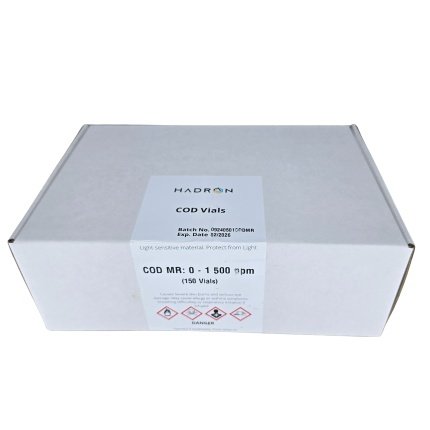

Standard Shipment
3 - 5 working days
IMPORTS
6 - 8 Weeks

R145.00Each
Chlorine dioxide (ClO2) effectively disinfects bacteria, viruses, and fungi. Industries widely use this yellow-green gas for disinfection, water treatment, and food safety, as it offers a safer alternative to traditional chlorine without producing harmful by-products.
| Weight | 0.5 kg |
|---|---|
| Dimensions | 9 × 14 × 14 cm |
Industries widely use chlorine dioxide (ClO2), a yellow-green gas, for its strong oxidizing properties. This compound effectively neutralizes a broad spectrum of pathogens, including bacteria, viruses, and fungi, due to its unique chemical structure. Furthermore, chlorine dioxide does not form harmful by-products like trihalomethanes, making it the preferred choice for health and safety-focused applications.
Moreover, chlorine dioxide’s primary use is disinfection. Its ability to eliminate microorganisms makes it ideal for sanitizing surfaces in healthcare, food processing, and public spaces. By using chlorine dioxide, organizations can ensure a higher level of hygiene, protecting both employees and consumers. Additionally, studies show it outperforms conventional disinfectants against biofilms and resistant pathogen strains.
In addition, water treatment processes also extensively use chlorine dioxide. As a result, it acts as a powerful oxidizer that breaks down organic matter and controls taste and odor in drinking water systems. Its ability to disinfect water safely improves water quality, making it vital for public health.
In the realm of food safety, chlorine dioxide serves as an effective treatment for washing fruits and vegetables. It reduces microbial load and ensures food products are safe for consumption. This, in turn, helps prevent foodborne illnesses and enhances food security.
Overall, chlorine dioxide’s versatility makes it essential across industries. Its distinct advantages, such as safety and effectiveness, over traditional disinfectants help maintain safe and sanitary environments, promoting public health.
The Chlorine Dioxide A and B Kit allows for the onsite generation of ClO2, a potent disinfectant and oxidizing agent. The kit includes two powders—A and B—that react when mixed to produce chlorine dioxide. Powder A usually contains sodium chlorite, and powder B is an acidifying agent like citric acid. When combined with water, they generate ClO2 for various disinfection uses.
Proper mixing of the powders is crucial for effective ClO2 generation. Therefore, users must follow the manufacturer’s instructions, which specify ratios and conditions. Onsite production, however, offers several benefits, including cost-effectiveness. The raw powders are cheaper than pre-mixed ClO2 solutions, enabling users to produce large quantities when needed. Additionally, onsite generation boosts efficiency, reducing delays from transportation or storage of liquid solutions.
Furthermore, the kit is easy to use and requires simple equipment. Personnel with basic training can handle the mixing, though safety precautions are necessary to avoid inhalation or skin contact. Proper storage of the powders is also essential; they should be kept in a cool, dry place, away from incompatible substances.
Finally, users must comply with regulatory guidelines when using ClO2. By adhering to federal and state standards, they ensure safe usage and environmental compliance. In conclusion, the Chlorine Dioxide A and B Kit offers an efficient solution for generating ClO2, combining ease of use, cost savings, and regulatory compliance.


3 - 5 working days
6 - 8 Weeks
No account yet?
Create an AccountWe use cookies to provide you with the best possible web experience. Clearing cookies may limit your banking functionality. Some cookies are strictly necessary for our website to function properly and cannot be switched off. To maintain these settings view "Cookie Preferences" in the menu